And you’ll climb a mountain and stand all alone at the top, and then you will have to come all the way home again
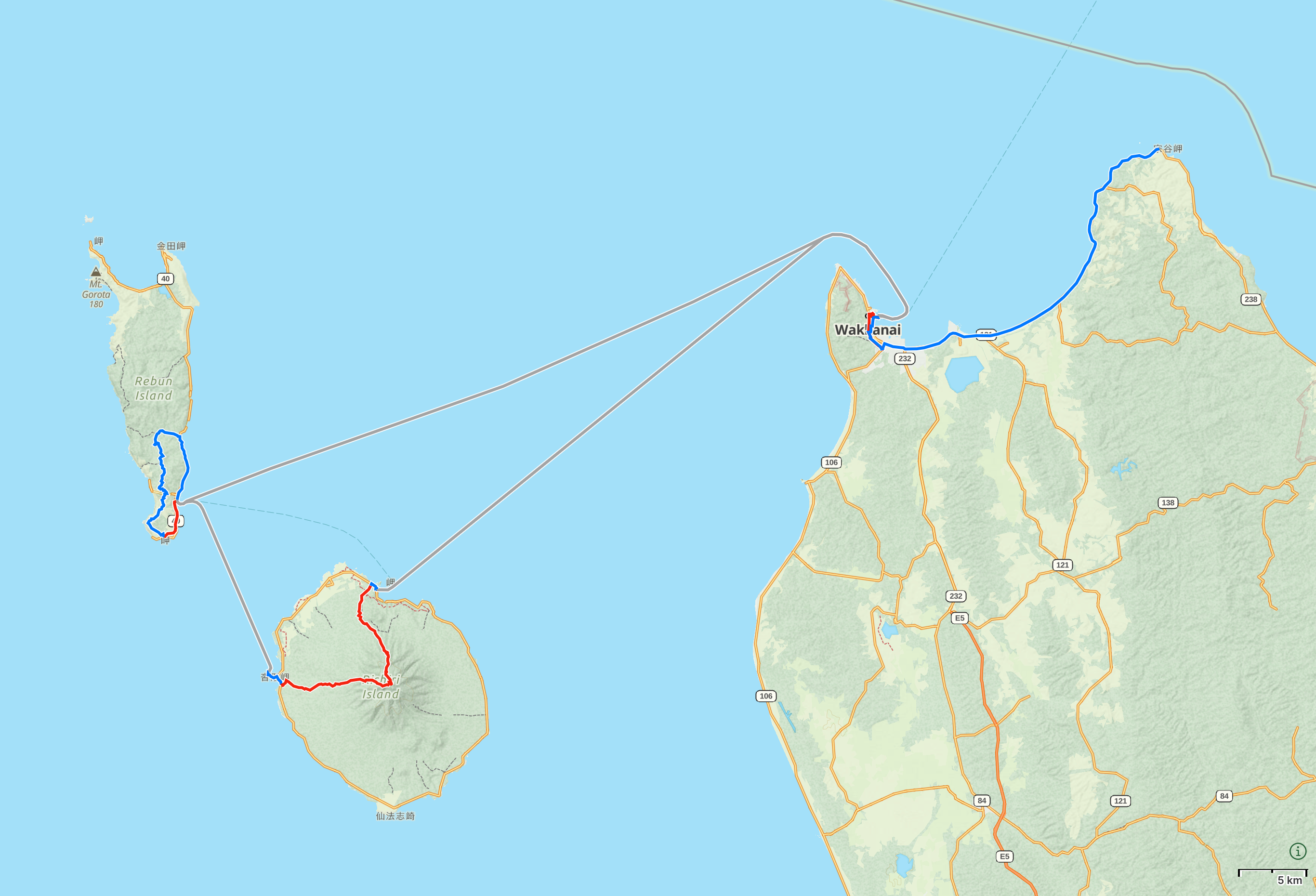
One of the worst books I have ever read happens to be about a journey from one end of Japan to the other. It’s Hokkaido Highway Blues by a certain Will Ferguson, who presents himself as an insufferable white male taking advantage of countless kind people who help him along on a hitch-hiking journey from Kagoshima to Hokkaido. Not a page goes by where he doesn’t mock the very people who help him or gloat about his having taken advantage of them, all the while moaning and whining at the slightest hint of discomfort. It’s either a very elaborate joke I don’t get or a self-portrait of a particular kind of person whose motives I understand even less.
But it does, perhaps unwittingly, contain a very concise insight on our relationship with mountains which rhymes with Reinhold Messner’s, referenced in my last dispatch. It is a quote from a Japanese mountaineer who gives a ride to the author somewhere in central Japan:
The gods are the mountains. They aren’t real in the way you say. The gods exist in the act of climbing a mountain, a sacred mountain.
Ferguson mocks him for this observation but that just further strengthens its clarity. The gods exist in the act of climbing a mountain. And as I turned a corner on the first road leading south-west from Cape Sōya, I saw Mount Rishiri rise on the horizon.
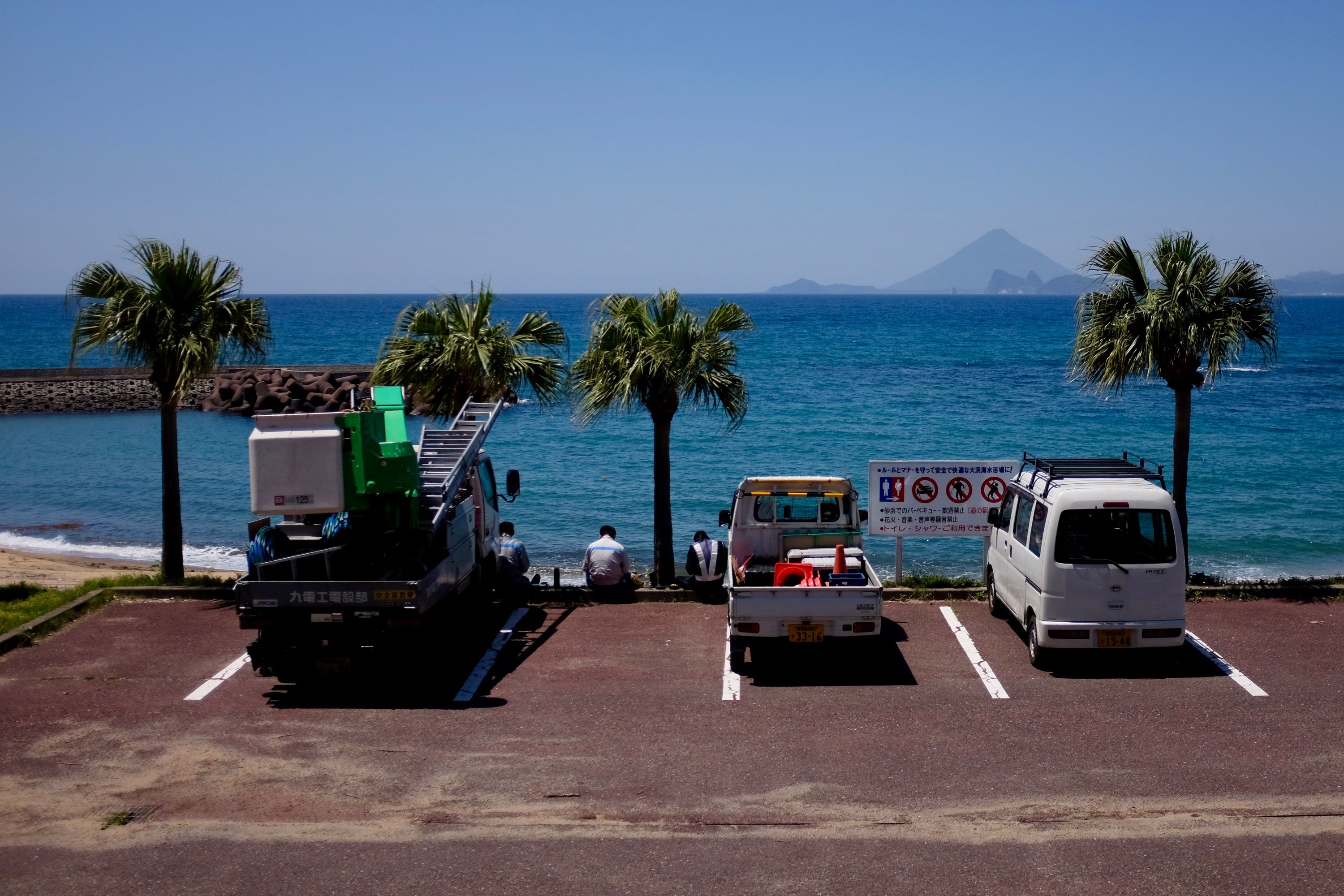
If you look at a topographic map of Japan you’ll see that the mainland is bracketed by two volcanoes, pillars of Hercules on the other end of Eurasia. The one in the south is Mount Kaimon, which I climbed in the first days of this circumambulation of Japan, in April 2017. It is a volcano with such a perfectly conical shape that the path to its summit rises in a spiral through the thick subtropical forest which covers its slopes. From the top you can see Cape Sata, the southernmost end of Japan.
In the last two years of the war, a kamikaze airfield was set up near the fields of tea-bushes to its north, on the outskirts of the old samurai town of Chiran. Mount Kaimon would have been the last sight of Japan for the teenage boy-pilots who were sent to their deaths by the nihilists running the country back then, before they were shot into the sea by American warships around Okinawa. It was also the first sight of Japan for Fukada Kyūya, the author of One Hundred Mountains of Japan, when he returned home after his time in a prisoner of war camp in Shanghai.
In Fukada’s book, published two decades later, Mount Kaimon is #99 (#100, Mount Miyanoura, lies further out to sea, on the island of Yakushima), while at the other end of this long, long country is Mount Rishiri, his #1, rising first in a gentle slope then in jagged spires to almost twice the height of Kaimon, floating on an island of its own in the Sea of Japan. It was the mountain I had come to climb.
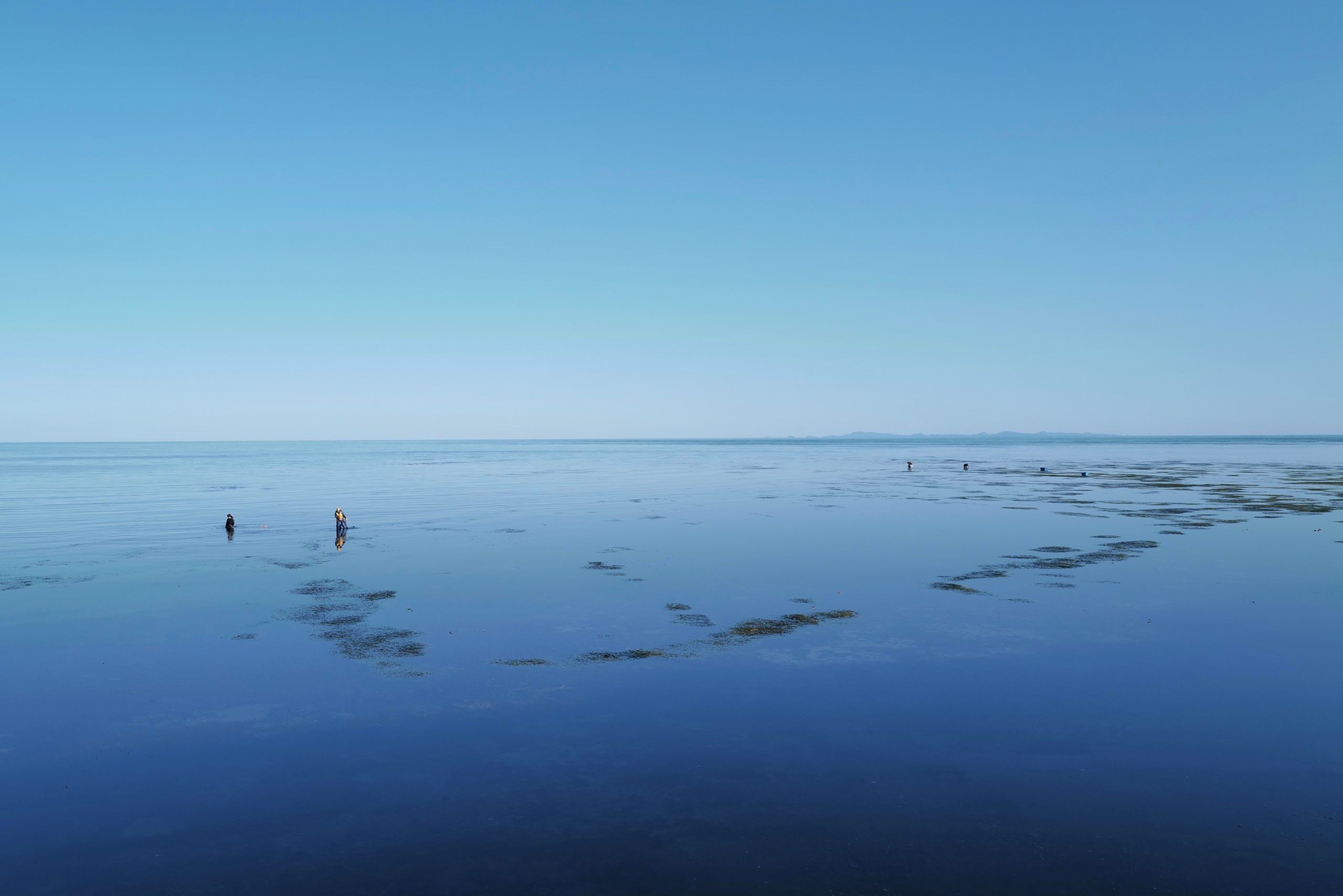


Shortly after I catch my first sight of Rishiri, on the horizon beyond Sōya Bay which stretches from the cape to Wakkanai, the town at Japan’s northern tip, I see in the distance a figure walking on the sidewalk, wearing a wide-brimmed hat and carrying a large rucksack. He is only the second pedestrian I’ve seen since leaving Nemuro, over three weeks before. We greet each other in the relentless northern sun and he introduces himself as Yūga from Nagasaki. This second pedestrian, astonishingly, walked here from Kagoshima, and I turn out to have intercepted the last three hours of his five-month walk. We giggle like maniacs, pore over maps by the side of the road, hand each other battered and misshapen snacks, and I’m reminded of a passage in Alan Booth’s The Roads to Sata:
The conversation turned to my walk through Japan, and the old man made a comment that I have thought about often and still don’t understand:
‘You’re walking from Hokkaido to Kyushu. You’re lucky. No Japanese could do that since we lost the war. Our spirits shrank with defeat, you see. We’re not big enough for such a journey.’
It appears that, forty-five autumns on, the spirits of at least one young Japanese have expanded for such a journey.
As a parting gift Yūga gives me a silk amulet with an image of Saigō Takamori, the complicated man from Kagoshima, and his hunting dog Tsun, which he carried with him through his long walk. I feel ashamed to have nothing of such poignancy to give in return. I watch his figure shrink, his long journey across his homeland almost over, and I now know that if this young man could walk here then I will have to walk back, to Kagoshima. It is, after all, so much easier to walk in the homelands of others than your own.
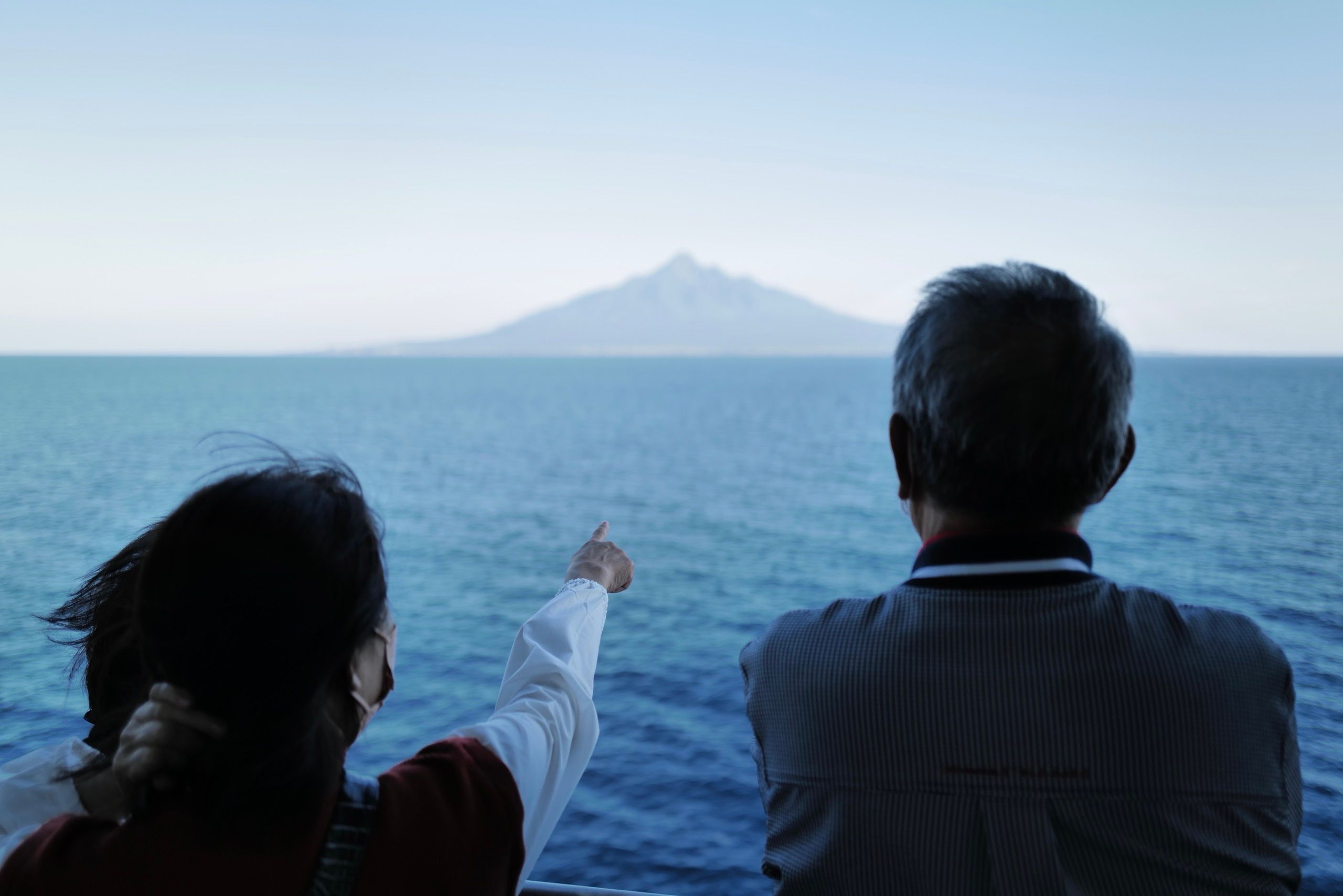
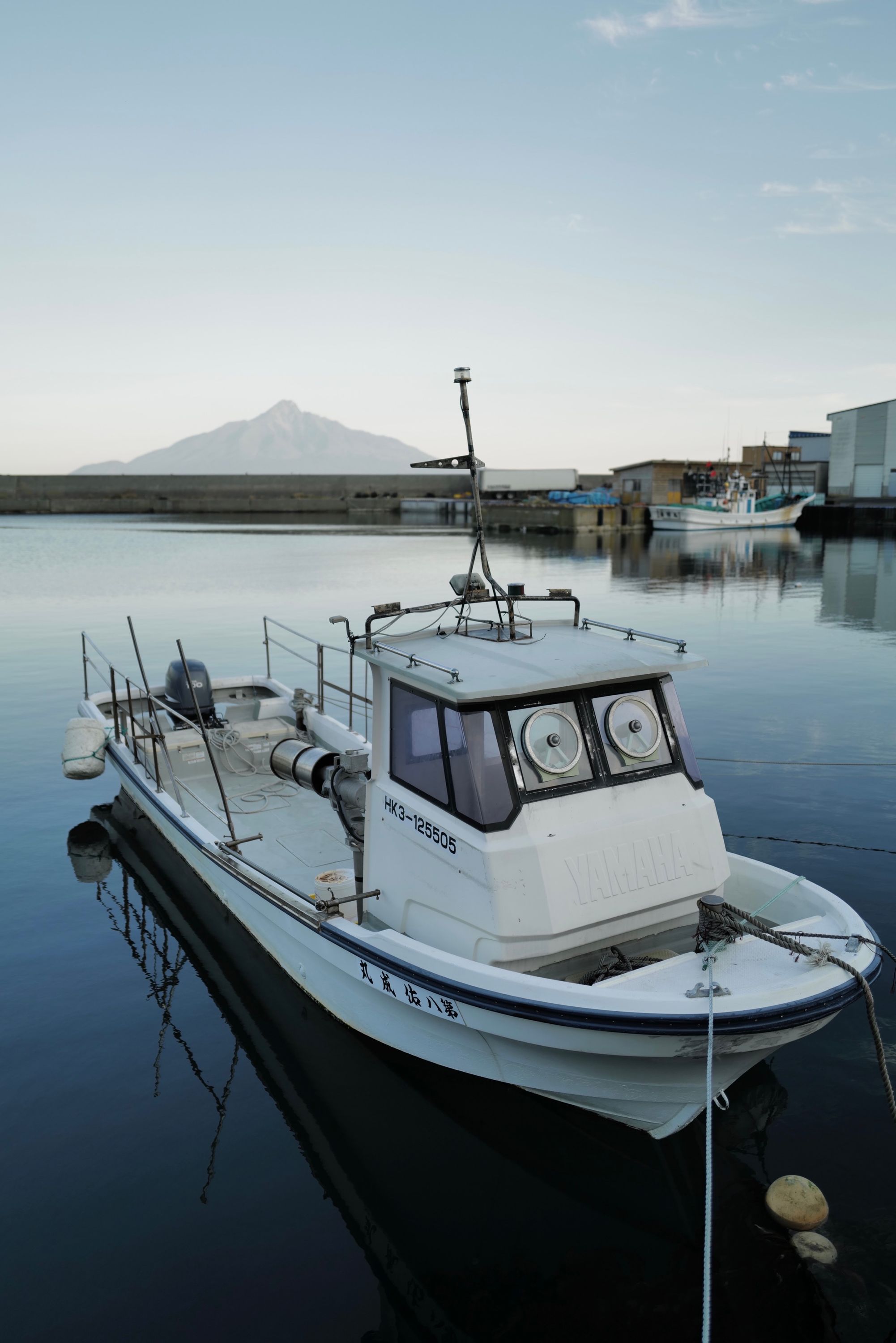

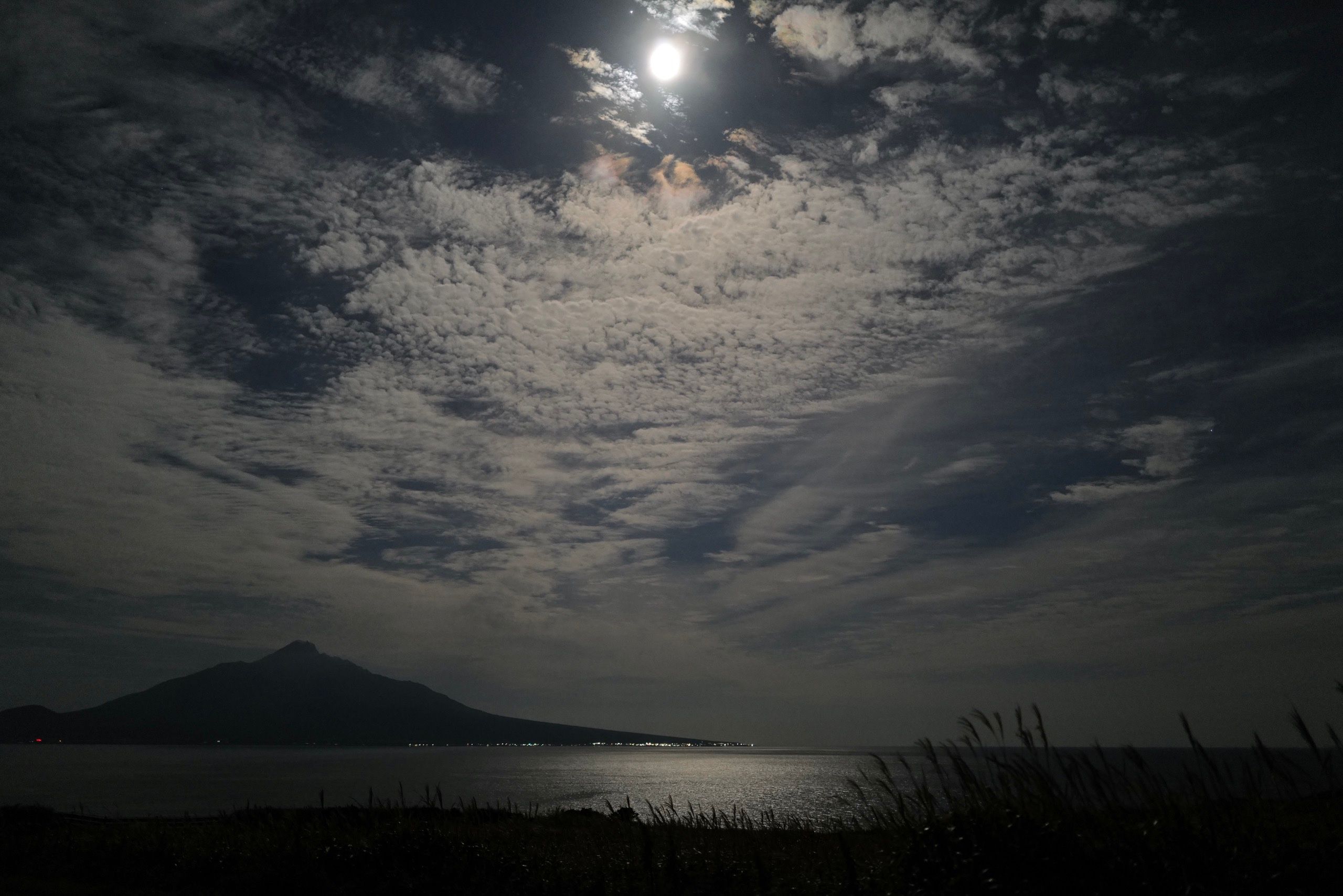
The ferry rounds Cape Noshappu, north of Wakkanai, and I stand on the deck with a beer and watch the volcano. It is a mountain unlike any I have seen. Under this brilliant blue, late summer sky, its heights swept clear of clouds by the winds of the previous typhoon, the volcano’s silhouette resolves into spires of rock and valleys of deep green forest, ringed by fishing villages and the indigo sea. I land on neighboring Rebun Island and keep watching it from the bathhouse as the sky darkens into purples and yellows, streaked by high-altitude clouds. At a small restaurant I am served a grilled Atka mackerel, then gifted a small bowl of salted sea urchin by a television crew from Sapporo. I walk on, towards the southern tip of Rebun, under a nearly full moon which turns the sea a rippling mirror of silver, in this glowing, enchanted world, in a soundscape of crickets and sea waves, and there is nothing but this ethereal, floating peak.
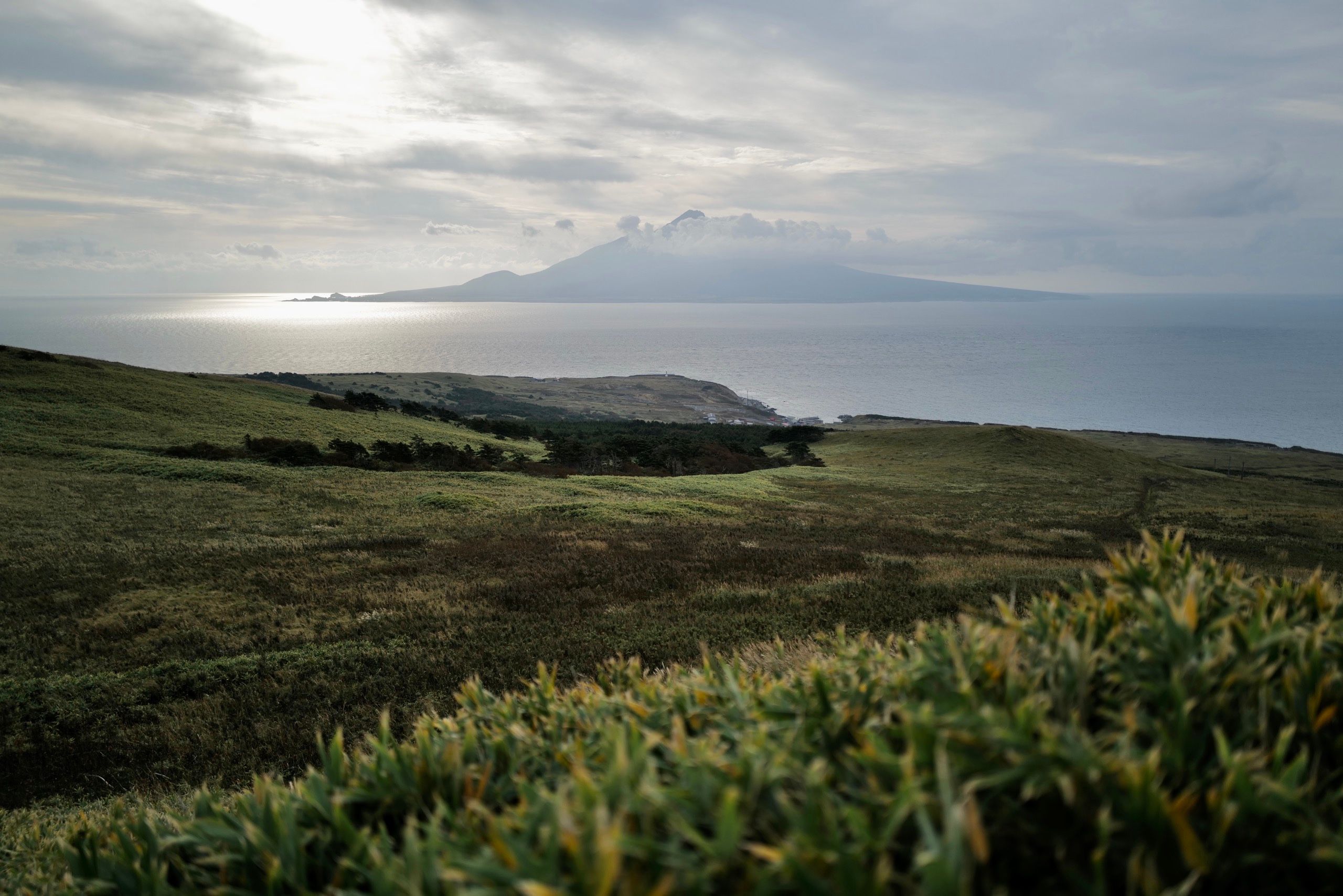

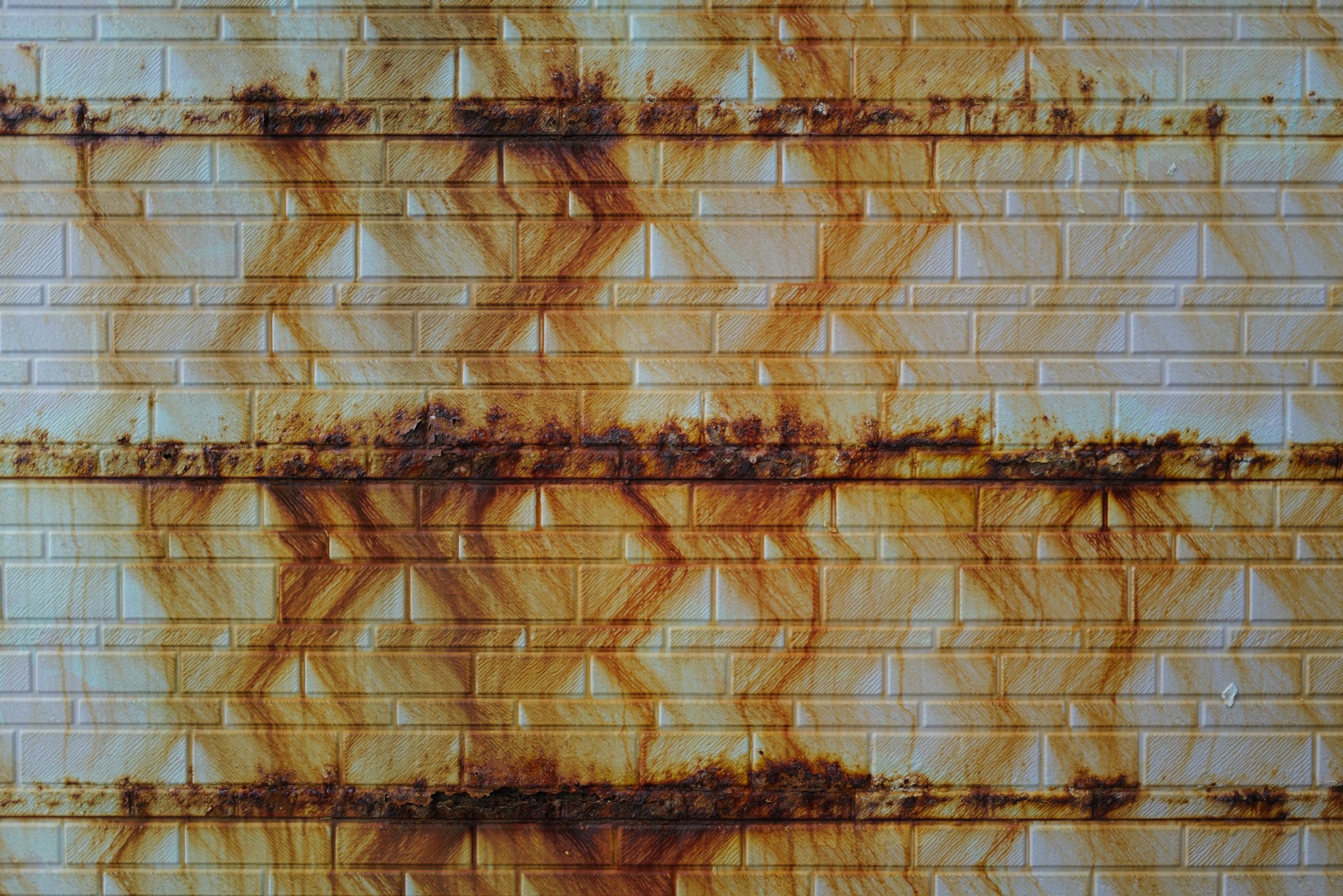
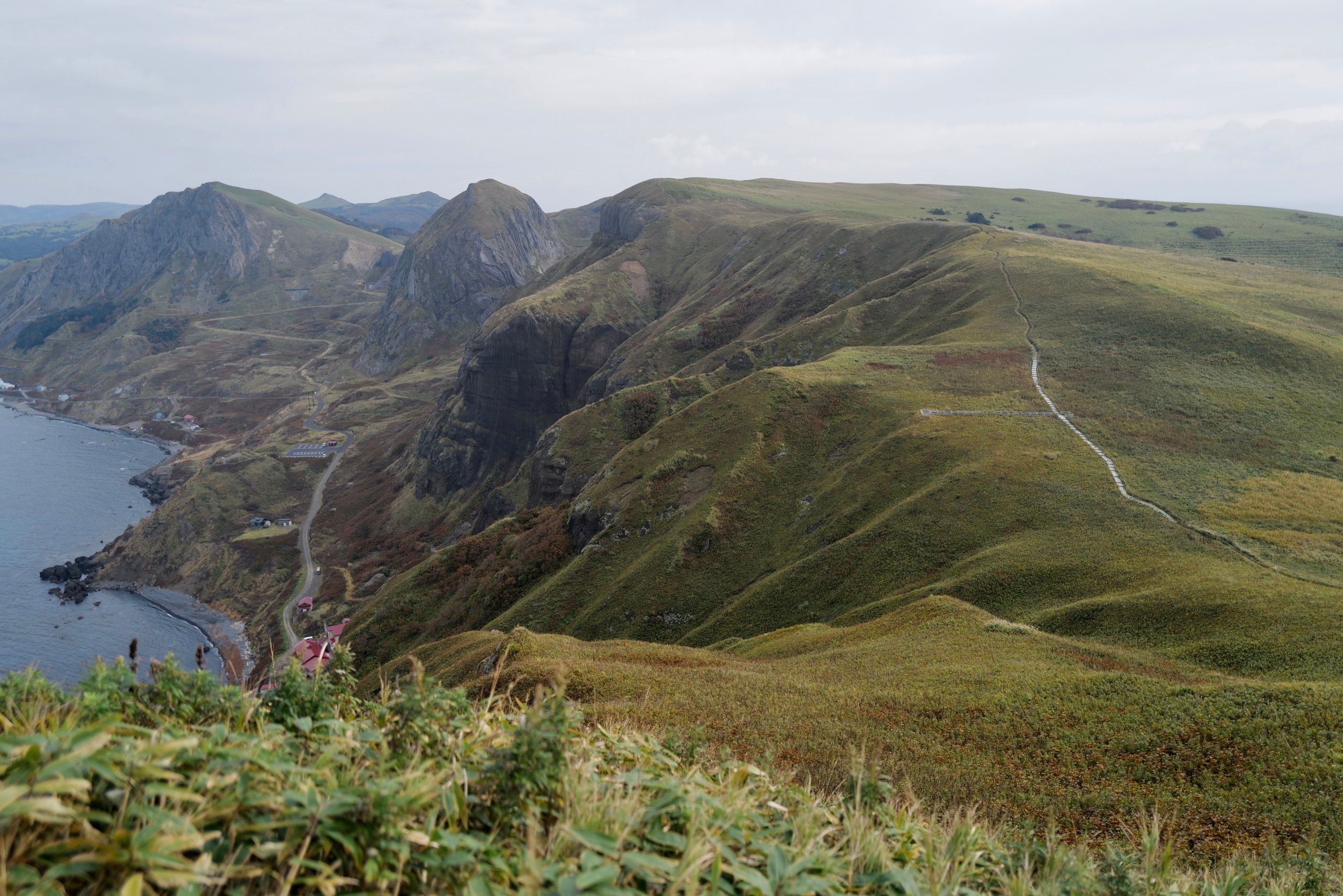
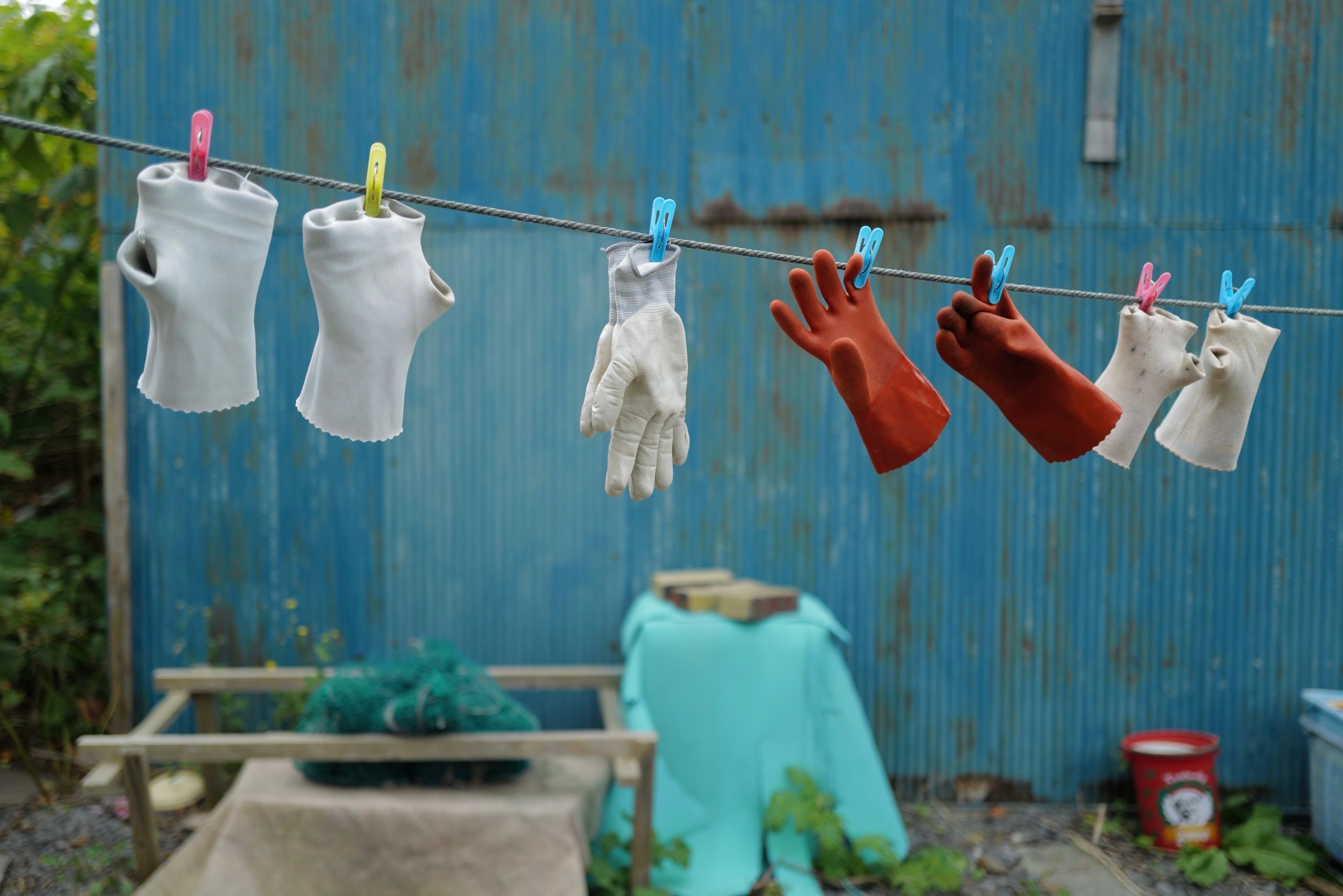
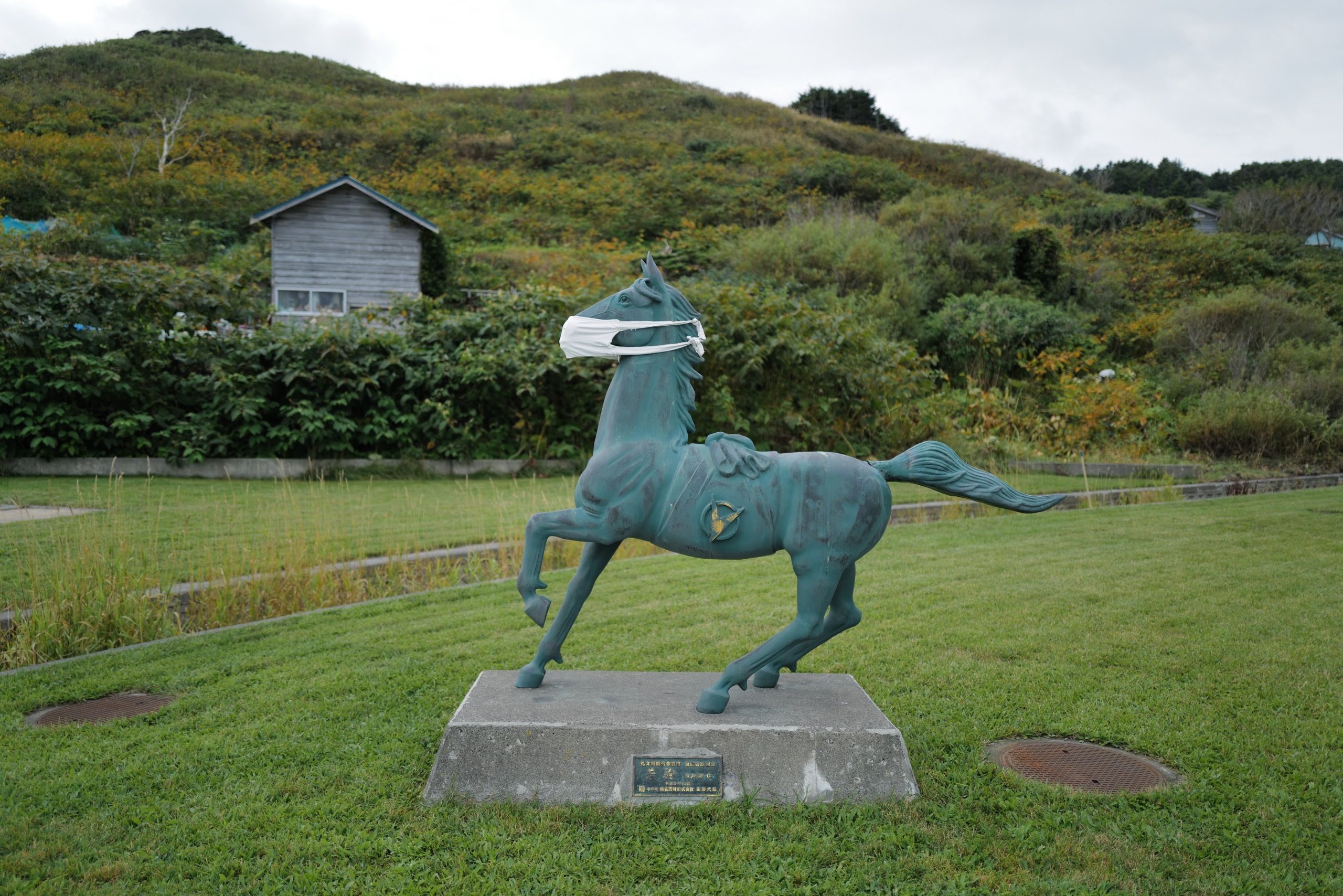
The next day I walk around the hills of Rebun, a rolling fantasy-landscape from a maxed-out video game, one eye on the volcano, then I board the afternoon ferry for the last approach. In the windswept port of Kutsugata I eat, and eat some more, and sit in the pools of the bathhouse until the evening sky clouds over, the sea a menacing grey now, the volcano invisible above the village. I’m terrified to my last bone. I haven’t climbed a mountain in three years, and while I may have walked in some high valleys and along some glaciers in the Hindu Kush and the Karakoram since, I know that doesn’t count. My body feels an inflatable boat with an unrepairable leak. And the god that exists in the act of climbing this mountain, I fear, is a hard god to please. But perhaps not impossible, I think, and I sleep like the dead and wake before dawn.
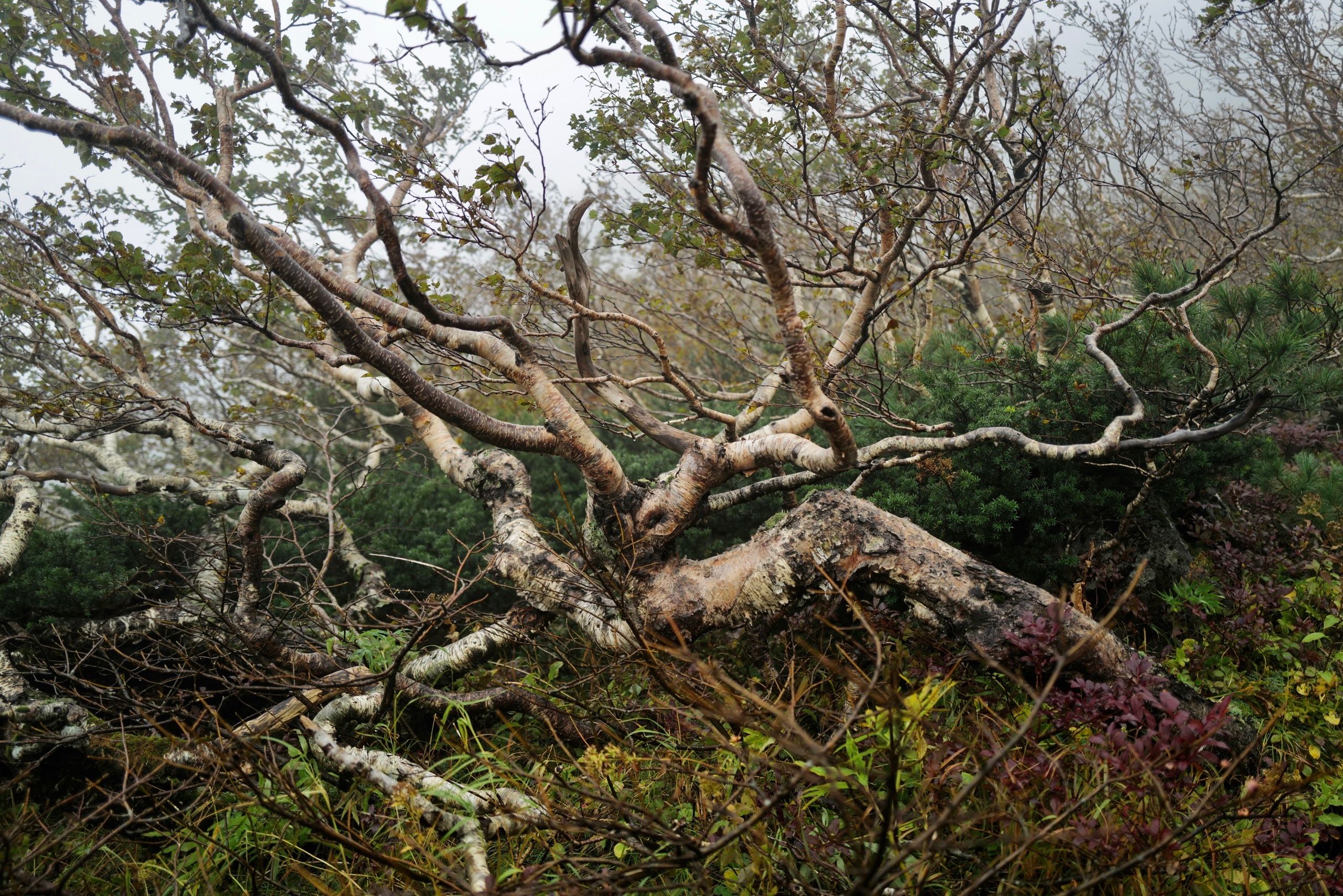
A large sack of egg sandwiches, bananas, boiled eggs. I feel simultaneously like a snake, a body-builder, and one of those geese they raise for foie gras. Coffee, another coffee. I walk out of Kutsugata and into the mountain at first light. Once inside the forest I feel better, my steps not as cumbersome, the path lined with the last of the summer’s wildflowers. I walk through the night’s spiderwebs and their silk sticks to my sweaty skin, a strange, tickling sensation. Ragged grey clouds race in parallaxing sheets above the forest and I hear the wind whistling and groaning high above.
Soon I’m inside the cloud and climb into the swirling grey air. The birches shrink and their branches twist and turn then twist again, silver-white dragons from an old landscape painting. A group of three female crossbills make short flying hops between these branches, completely unafraid, their feathers subtle shades of brown, green, and grey. There isn’t a drop of rain but my clothes are dripping with condensation, and I begin to go through my reserves of chocolate. A man in black technical clothes appears from the direction of the summit and walks down the path, a silent mirage, and I tuck inside a booth for a bit of rest. Inside, a poster illustrating the correct use of carry-out toilet bags shows a cartoon of a Siberian chipmunk turn its nose at a hiker’s unseen waste. The wind is ferocious now, roaring unimpeded across the sea from Siberia, but I am sheltered from most of it by the thick carpet of stone pine which covers the upper slopes of the volcano, and I feel a deep sense of gratitude.
Some two hundred meters below the summit, the path narrows into a series of thin ledges above and around enormous boulders, and I climb across and pull myself up them, scrambling now, dizzy and lightweight with exhaustion. Then the path disappears altogether and dissolves into a steep slope of volcanic scree. I recall the lateral moraines of the Batura Glacier in the Karakoram, which I walked on in spring of last year, its dusty greys and browns replaced with a riot of red pebbles and black rocks from the volcano. I know I have to be like the cloud, flowing across this crumbling, shifting landscape, and before I know it I’m across. I shed my rucksack and turn on the last path to the summit. Two young women climb down, dressed in colorful waterproof overalls, and they soon disappear behind a bend.
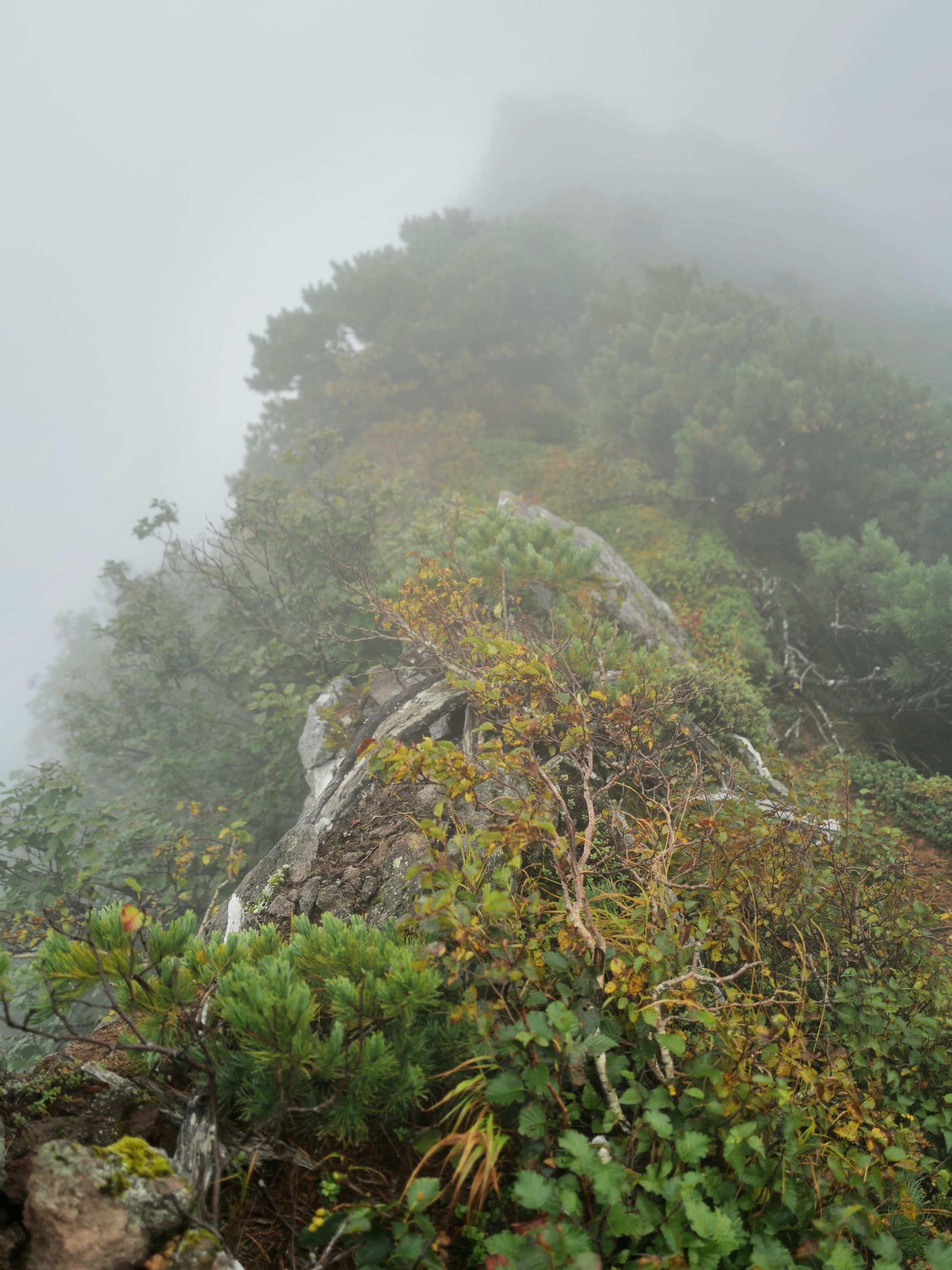
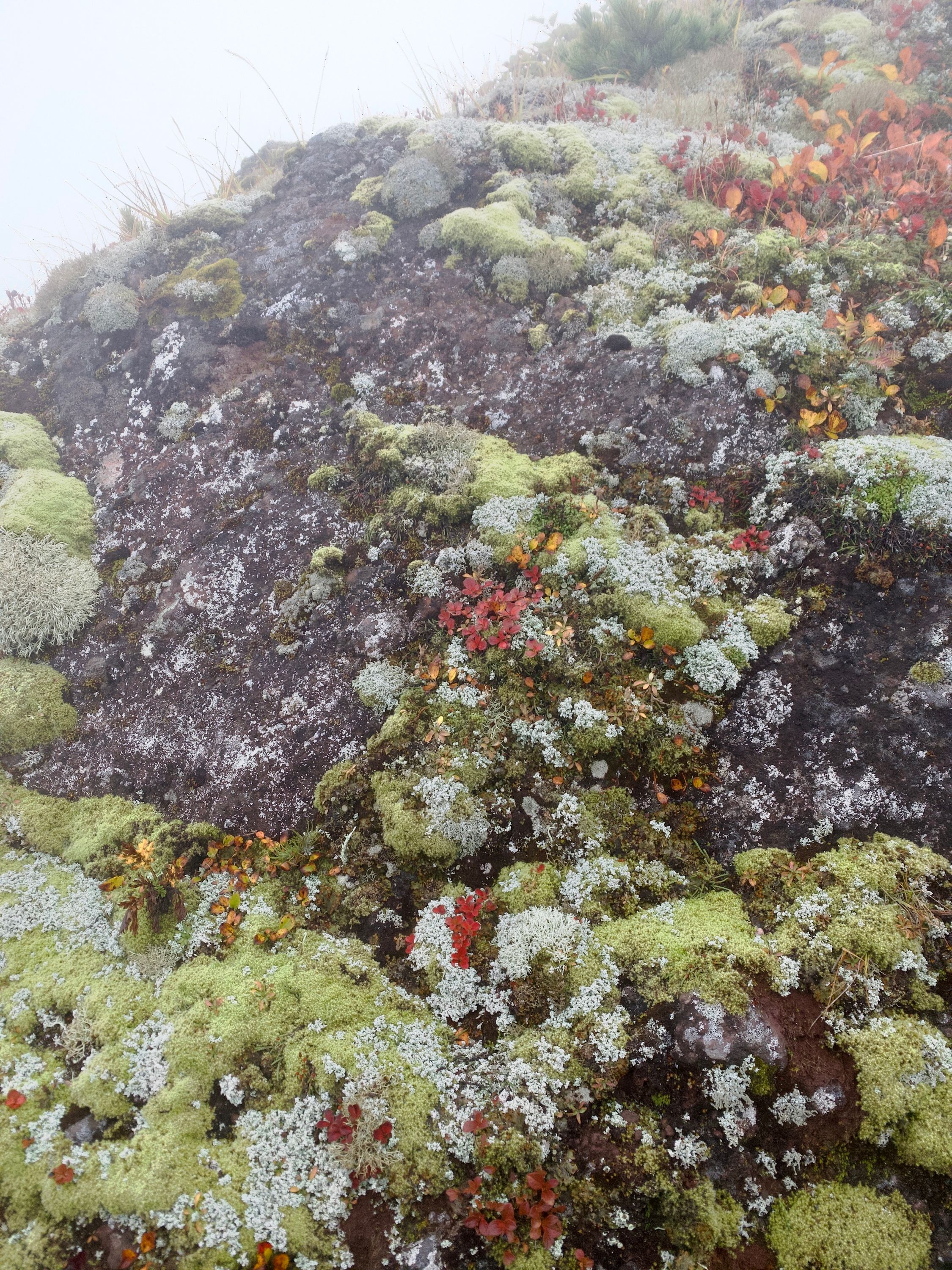

All around is the cloud and all around is the sea at the end of Japan. A small shrine stands at the summit, propellers from the engines of fishing boats nailed to its planks, inscribed with messages for this reflecting god in whose company, all alone now, I feel a strange, inexplicable benevolence. As if it now chose to grudgingly appreciate my act of climbing it, my act of having walked to its summit from that of its delicate, distant sibling in the south, Mount Kaimon. As if it knew that I would have to go all the way home again. I stand there, knowing that it will take something from me and also give something in return. I turn my back and walk down. Some hours later the clouds part and I see the sea far below, beyond the village of Oshidomari, its blue evocatively Mediterranean, and later I drink from the cool waters of the Kanro spring. I’m down, back in the world of humans, of vending machines, road signs, My Shop Toshima, a woman walking two oversized white poodles, and a bathhouse in whose waters float the first leaves of autumn.
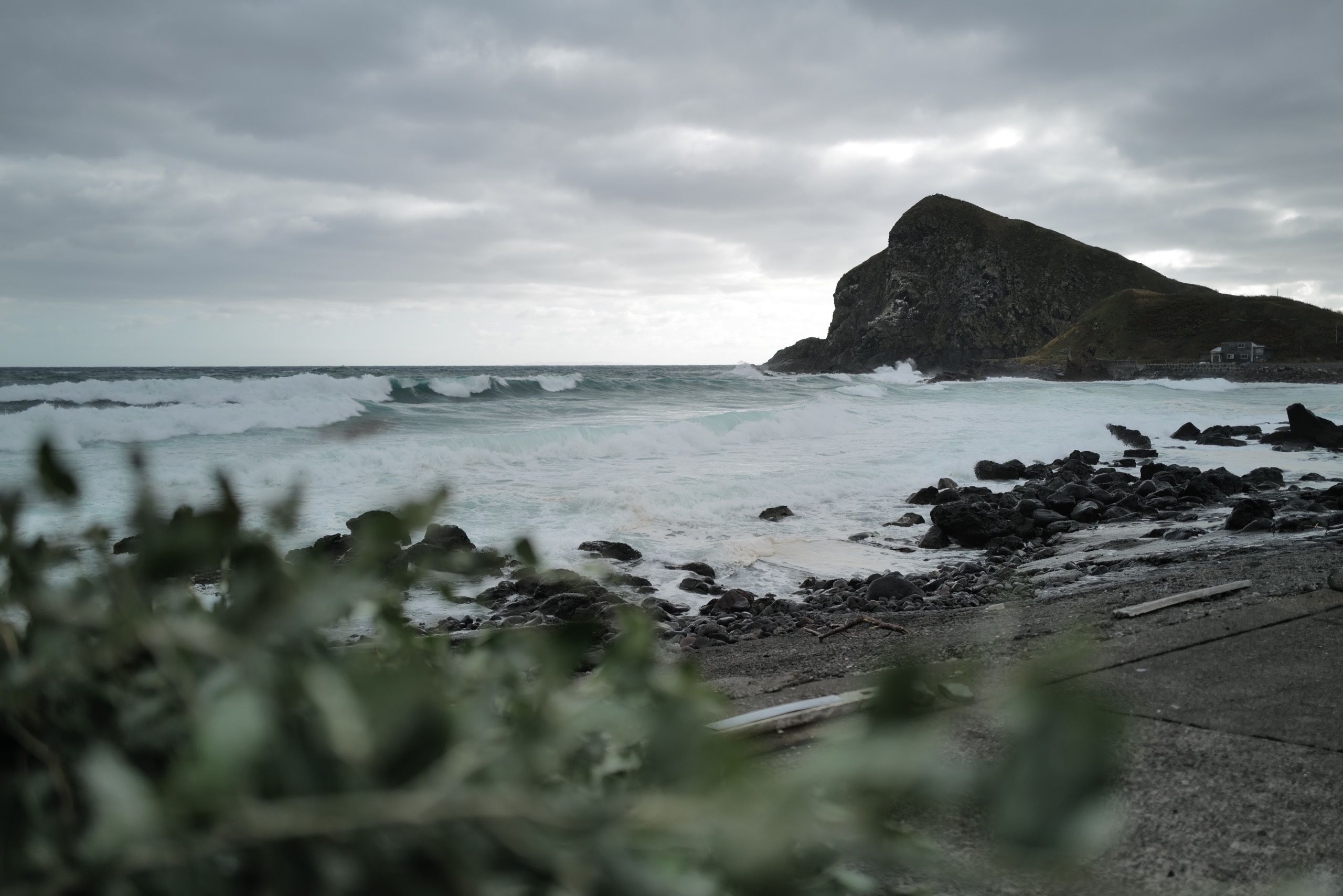
All night the wind screams, a gale now, the ferry to the mainland canceled, and in the morning I wake to a louring grey sky and a ferocious sea whipped into a frenzy of white and emerald. At the port, a Japanese-Brazilian woman from São Paulo who had married a man from the island and came to live here opens the shutters of her café and brews me the first, second, and third good cups of coffee on this journey. I can barely walk, complete exhaustion mixed with the sudden worsening of a foot injury I picked up some days earlier, and I sit by a table and watch the wind rip the clouds to shreds.
By lunchtime the volcano shows itself again, rising above a sea raging under a spotless blue sky, distant, our act finished. The afternoon ferry surfs the waves from Wakkanai and I board it for the return trip. I stand on its deck with a group of schoolchildren from Sapporo and we watch the volcano until it disappears into the night.
For some days I rest in Wakkanai but when I leave, the pain in my right foot turns my stomach. Standing there in the first rains of the next typhoon, I know that I cannot walk on. The volcano teaches by taking away and it is now up to me to find out what it gave in return. The first of all the trains that will take me to Tokyo rolls across the town’s grey, wet outskirts and makes a turn towards the coast, but the volcano isn’t there anymore, only the clouds, only the waves, and the train dips back into the forest, into rippling hill-sides of bamboo grass.
The End

